This French director of Chilean origin can be considered one of the most provocative artists of the second half of the 20th century: His role in the cinematograph and even in popular art in general is outstanding. He is interested not only in cinema but also in poetry, theatre, literature and even psychotherapy. His original and daring works always attract attention, scandalizing and encouraging. Perhaps that is why his name is quite well known in Russia even by people who have never seen his films or read his books. Reviews of his works are ambiguous and contradictory. LACRUS continues to investigate Latin American art cinema. And this time it will be Alejandro Jodorowsky, a faithful apologist for surrealism, king of the absurd and master of self-irony, hyper avant-garde, a man out of age, ethnicity and geography.
Alejandro Jodorowsky was born in 1929 in Tocopilla, Chile. His parents were Jews of Ukrainian origin whose families had immigrated to Chile escaping anti-Semitism. These two themes, family and ethnicity, played a key role in shaping the director’s exceptional personality.
According to his own confession, his soul has neither race nor ethnicity. That has become possible, partially, because, according to Alejandro Jodorowsky, nobody ever considered him Chilean, while his father, a convinced communist, always hid his ethnicity. At the same time, Jewish tradition and genealogy were very attractive to Alexander Jodorowsky. He had to study deeply his family history and Jewish culture in general to write one of his first books ‘Where a Bird Sings Best’. Family chronicles and allegorical legends about Russia and South America are intertwined in this semi-autobiographical novel published in 1992. This work is a carnival of the absurd that, through a poetic and grotesque language, convinces readers of the unlimited power of imagination and ends with the author’s birth in 1929.
Alejandro Jodorowsky’s childhood and youth, as well as complicated family relationships, were reflected, in a very hypertrophic way, in another semi-autobiographical work, the candid and extravagant film ‘The Dance of Reality’ (2013) and then in its continuation ‘Endless Poetry’ (2016).
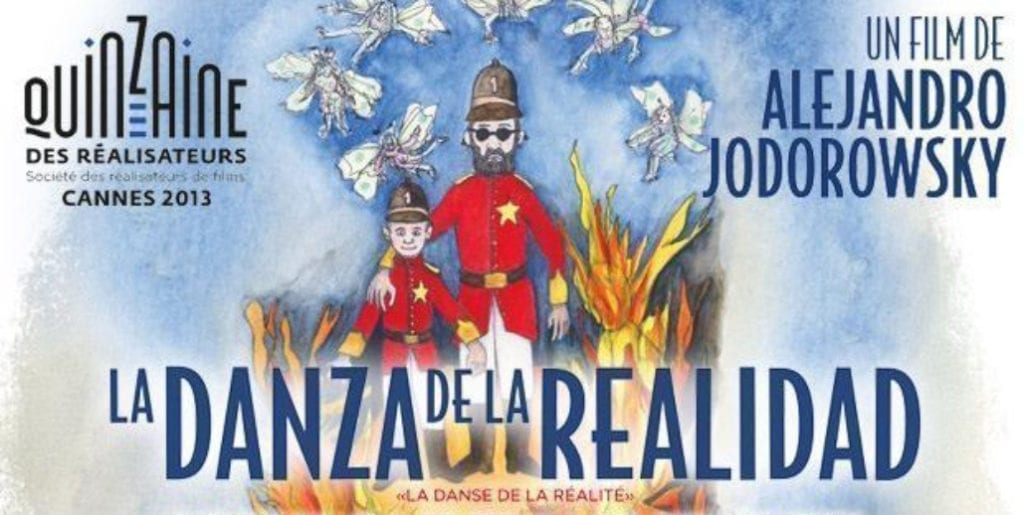
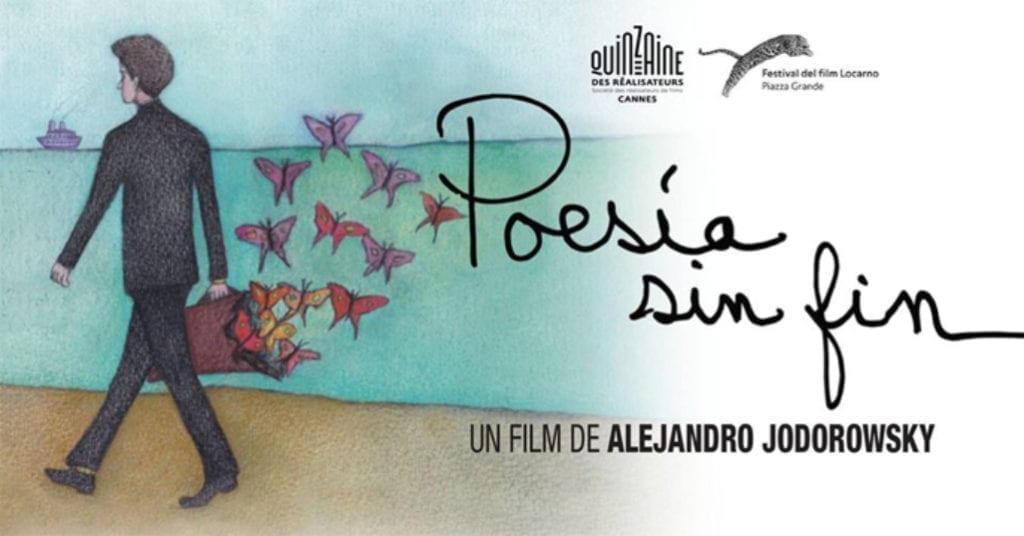
Both films framed within the classical surrealism. It is a phantasmagoria full of the wisdom encoded in numerous apologies and symbolic and mythological imageries. The films were created with the participation of the relatives of Alejandro Jodorowsky. And that is one of the peculiarities of the master’s way of working: in all his cinematographic, theatrical, and literary projects, he always collaborates closely with members of his family and those with similar ideas. Alejandro Jodorowsky calls it a therapy that allows to feel cooperation. Thus, Alejandro Jodorowsky’s son, Brontis Jodorowsky began his acting career in the iconic film ‘El Topo’ (1970). After almost fifty years, he plays the role of his own grandfather in his father’s new films.
The film ‘El Topo’ gave the director world fame and became iconic, originating the phenomenon of the midnight movies. ‘El Topo’ is the allegorical western based on ultraviolence and impregnated with religious symbols, described by several critics as a freak show. John Lennon, the leader of the British musical group The Beatles, had become its fan. The musician contributed to the distribution of ‘El Topo’ and found money for the next Jodorowsky’s project.
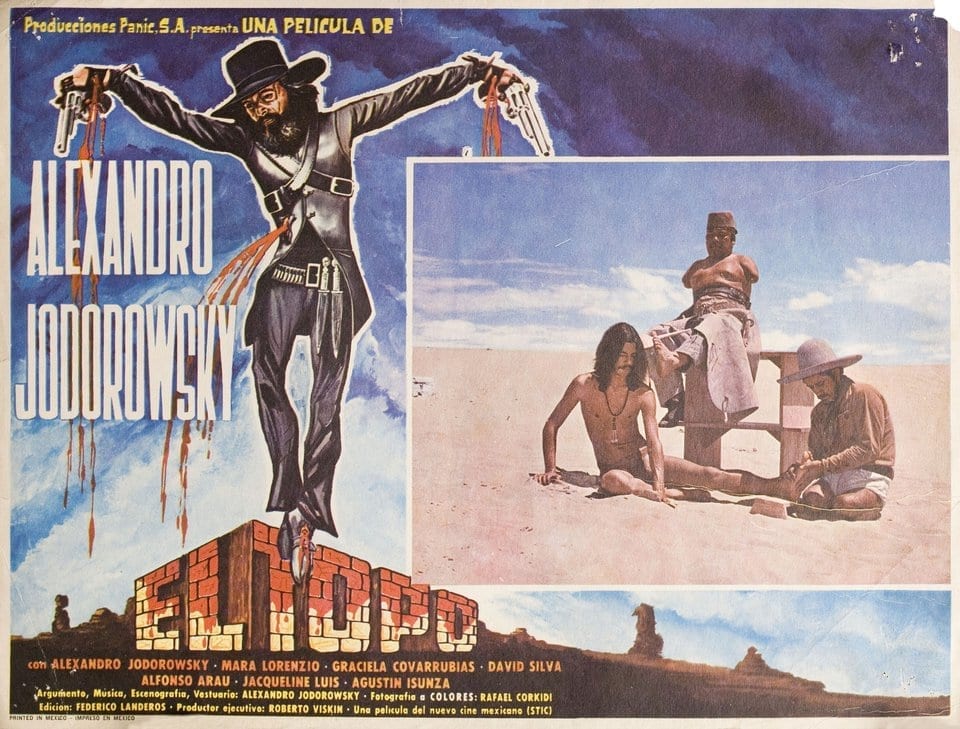
In 1973 the film ‘Holy Mountain’, a very psychedelic dystopia, was released. Its plot is based on the religious treatise ‘Ascent of Mount Carmel’, by St. John of the Cross, a 16th century Spanish mystic, and the French philosophical novel ‘Mount Analogue’, by René Domal (1952). We cannot recommend this film to the unprepared audience who might consider the poetic synthesis of scathing sarcasm and deep spirituality, born with the moderate mediation of prohibited substances, to be very ambiguous and even offensive.
Something similar happened with his first film ‘Fando and Lis’ presented by Jodorowsky in 1968 at the Acapulco Film Festival. The symbolic odyssey of the protagonists who seek happiness, was created from the play of Fernando Arrabal in the best tradition of the theatre of the absurd. The film caused a great scandal. Not all viewers were prepared for the outlandish mix of the tragic and the comic, as well as the way the narrative was framed. Many people considered the film amoral and blasphemous, others insisted on deporting the director from Mexico and censoring his film. Jodorowsky claims that the public was going to lynch him, and he had to escape in the trunk. But all of that brought more attention to the film.
By then Alejandro Jodorowsky had been working in Mexico for several years. In Mexico, he devoted himself to dramaturgy and avant-garde theatrical performances. In addition, in 1966 in Mexico Jodorowsky published his first comics ‘Anibal 5’.

The ‘Holy Mountain’ could not achieve the success of ‘El Topo’, but it was popular enough to influence popular art: allusions to the ‘Holy Mountain’ are found in several well-known films. For example, the influence of Jodorowsky is observed in the works of Alfonso Cuarón and Guillermo del Toro. Wes Borland, Limp Bizkit’s guitar player, noticed that the ‘Holy Mountain’ impressed him greatly. Under the influence of this film was the American singer Marilyn Manson. The musician asked Jodorowsky to direct his wedding ceremony with Dita von Teese. For that occasion, the costume in which Alejandro Jodorowsky had played the role of Alchemist in the ‘Holy Mountain’ was restored.
After the ‘Holy Mountain’ Alejandro Jodorowsky set out to adapt the science fiction novel ‘Dune’, by Frank Herbert (1965) to the cinema. Producer Allen Klein insisted on adapting the French erotic novel ‘Histoire d’O’, by Pauline Réage (1954) for film as more promising from a commercial point of view, but Jodorowsky refused. “I make my films not to earn money, but to spend it.” This is the principle of the artist. Due to controversies with Klein who owned the rights to the films ‘El Topo’ and the ‘Holy Mountain’, the screening of both films was limited until the mid-2000s. But Alejandro Jodorowsky remained true to himself and continued working on ‘Dune’ with producer Michel Seydoux.
Jodorowsky and Seydoux formed an exceptional team: Dan O´Bannon as screenwriter, Hans Rudi Giger, Jean “Moebius” Jiraud and Cris Frost as designers, Salvador Dali, Mick Jagger, Orson Welles as actors, Pink Floyd as composers. Within five years the team had thousands of illustrations and a draft script for a film that was more than 20 hours long. But the scale of the idea scared even Hollywood, which refused to finance the project. To learn more about this story, we recommend watching Frank Pavich’s documentary ‘Jodorowsky’s Dune’ (2013).

Jodorowsky was unable to film his own ‘Dune’, but he did not fail. Alejandro Jodorowsky affirms: “I think there are no failures, failure tells us that we have to find another way.” It is difficult to disagree with him, since without his ‘Dune’ ‘Star Wars’, ‘Terminator’, ‘Alien’ and other iconic films would probably not have seen the light of day, because the drafts and ideas made for ‘Dune’ were used for creating many other films. Numerous illustrations also served as the basis for several comics created with the participation of Alejandro Jodorowsky. It is worth noting that for some years the famous director used to make his living by comics.
At the same time, Jodorowsky’s artistic dream was neigther realized by his followers. David Lynch’s ‘Dune’ released in 1985, according to Jodorowsky, fell flat. And as for the trailer for Denis Villeneuve’s new Dune, whose scheduled release for December 2020 was postponed, the iconic director was also sceptical. In one of the interviews he noted: “Not bad, although nothing new”, lamenting that it is unlikely that audiences addicted to superhero movies will be able to understand the “correct” adaptation of ‘Dune’.

That’s Alejandro Jodorowsky all over. The continuous search and the ongoing desire for self-knowledge. At 23, he left Chile for Paris to resurrect surrealism together with André Bretón, but created the Panic Movement, an anarchic theatre that glorified the Greek god Pan. Inspired by the aesthetics of the Spanish director Luis Buñuel, the members of the Movement elaborated their own post-surrealistic discourse based on the synthesis of the avant-garde heritage and the latest artistic achievements. The apogee of Panic Movement’s work was the performance ‘Melodrama Sacramentral’ premiered in Paris in 1965. Today some fragments of that provocative and ‘panic’ presentation can be found on the Internet. Under the influence of these experiments, Jodorowsky’s later works were enriched with new reminiscences.
Alejandro Jodorowsky learned pantomime from Marcel Marceau, he compared himself to Marceau, he wanted to surpass his teacher until he understood that it is impossible. Then he thought: “If I can’t be the best mime, then I can be the best in another sphere.” Jodorowsky proposed the conception of metaphysical pantomime and began to compose for Marceau. Many of these ideas found their reflection in the film ‘Holy Blood’ (1989) which was screened in the ‘Un Certain Regard’ section of the Cannes Film Festival. Unlike previous works by the director, the plot of this film is clearer, although there is also a lot of violence and horror, spectacular scenes and hypnotizing allegorical narration.
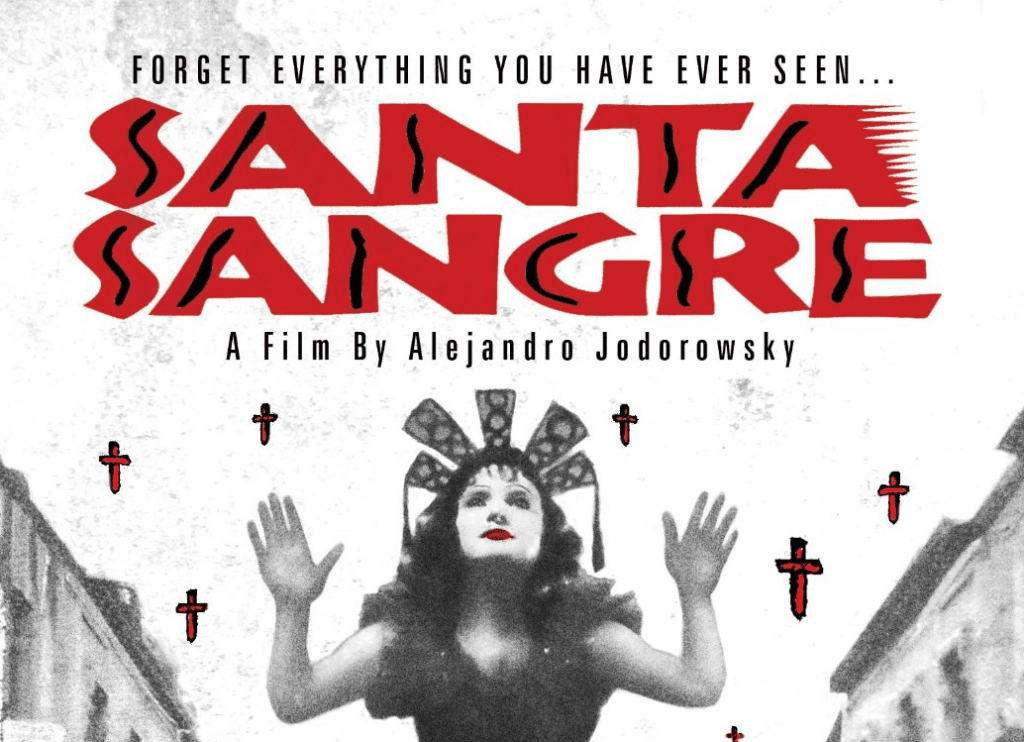
By working a lot with semantics, Alejandro Jodorowsky confidently asserts that language, be it poetry, prose, or pantomime, is an art. And the destiny of an authentic art is to free and heal the mind; for that, based on the presupposition that the unconscious interprets symbolic actions as if they were real events, Alejandro Jodorowsky developed a non-scientific technique of spiritual healing that he called ‘Psychomagic’. He is convinced that through magical-symbolic acts one can influence the subconscious and treat psychological traumas. Jodorowsky’s psychomagic lies in shamanism, the Tarot, and psychoanalysis. Several of his books are dedicated to this subject, as well as the documentary film ‘Psychomagic a Healing Art’ presented by Alejandro Jodorowsky in 2019.
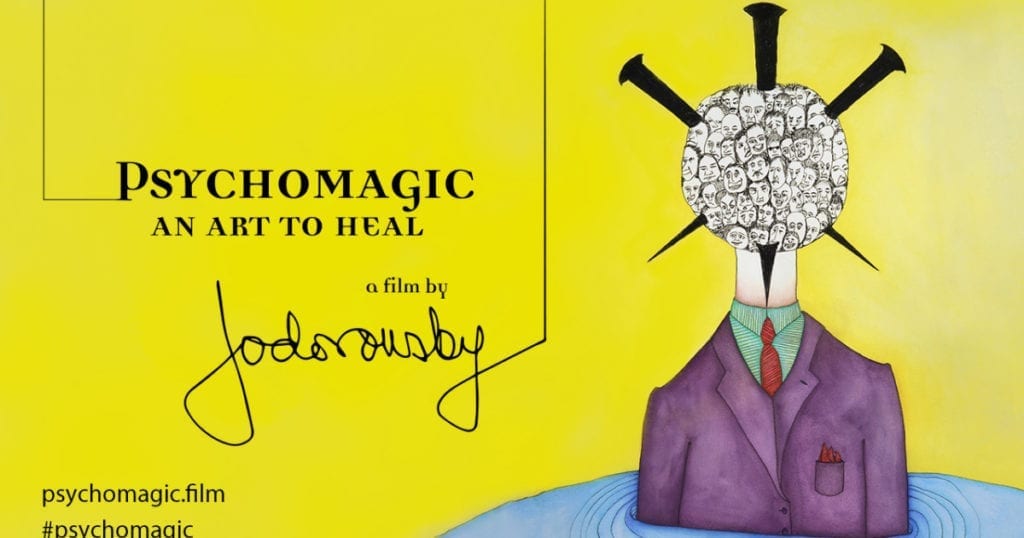
Years pass, but the active nature of Alejandro Jodorowsky remains tireless: films, cartoons, poetry, prose, dramaturgy, comics, theatrical performances, exhibitions and retrospectives. His Twitter has millions of followers; his talent has millions of fans. In his Facebook he teaches “reading” the authentic Tarot of the XV century restored by himself, saying repeatedly that the Tarot does not predict the future.
Even without being a fan of Jodorowsky’s talent, it’s hard not to admire his multifaceted personality, and perhaps it’s not worth even trying to predict how high the imagination of this genius master of paradox may soar.


